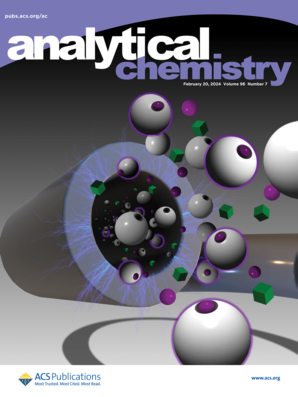金属枝晶:我们能走多远?
IF 6.7
1区 化学
Q1 CHEMISTRY, ANALYTICAL
引用次数: 0
摘要
金属树突是一种具有独特的蕨类或树状外观的新型分层纳米结构,它开创了传感和可穿戴技术的新时代。它们具有多种特性,包括高表面积、晶体缺陷、晶界和边缘位点,所有这些都有助于增加传感和可穿戴平台的催化位点数量,以及抗体和药物分子粘附的功能化位点。上述特性使其具有优异的导电性和增强的催化活性,从而促进了分析物在催化平台中的质量和电荷转移速率的提高。自从它们被发现以来,它们的合成、复合材料纳米工程以及在传感器平台和可穿戴设备、燃料电池、超级电容器和药物输送等不同领域的广泛分析应用都取得了实质性进展。尽管基于枝晶的平台在过去十年中表现良好,但由于各种原因,它们的商业化尚未实现,主要是由于不受控制的发展而在大规模合成中实现同质性的挑战。除此之外,其他挑战包括过渡到非贵金属,同时仍保持高活性和稳定性,以及它们在药物递送后体内代谢缓慢和身体排泄不良,这些共同阻碍了它们的翻译。该展望包括金属枝晶及其分析平台的重要突破、关键知识缺口和商业化瓶颈,并着眼于基于枝晶的传感、可穿戴电子产品以及其他此类平台的未来。本文章由计算机程序翻译,如有差异,请以英文原文为准。

Metallic Dendrites: How Far Can We Go?
Metallic dendrites, novel hierarchical nanostructures with a distinctive fern- or tree-like appearance, introduce a new era in sensing and wearable technologies. They possess several properties, including high surface area, crystal defects, grain boundaries, and edge sites, all of which contribute to an increased number of catalytic sites for sensing and wearable platforms, as well as functionalization sites for antibodies and drug molecules’ adhesion. The aforementioned characteristics endow them with superior conductivity and enhanced catalytic activity, thereby facilitating improved mass and charge transfer rates of analytes in catalytic platforms. Since their discovery, there has been substantial progress in their synthesis, nanoengineering with composites, and extensive analytical applications in diverse domains, such as sensor platforms and wearables, fuel cells, supercapacitors, and drug delivery. Although platforms based on dendrites have performed well over the past ten years, their commercialization has yet to take place for a variety of reasons, primarily being the challenge to achieve homogeneity in large-scale synthesis due to uncontrolled development. Besides this, other challenges include transitioning to non-noble metals while still maintaining high activity and stability, as well as their sluggish metabolism in vivo following drug delivery and poor excretion by the body, which collectively hinder their translation. This Perspective encompasses important breakthroughs of metallic dendrites and analytical platforms based upon them, crucial knowledge gaps, and bottlenecks in commercialization with an eye towards the future of dendrite-based sensing, wearable electronics, as well as other such platforms.
求助全文
通过发布文献求助,成功后即可免费获取论文全文。
去求助
来源期刊

Analytical Chemistry
化学-分析化学
CiteScore
12.10
自引率
12.20%
发文量
1949
审稿时长
1.4 months
期刊介绍:
Analytical Chemistry, a peer-reviewed research journal, focuses on disseminating new and original knowledge across all branches of analytical chemistry. Fundamental articles may explore general principles of chemical measurement science and need not directly address existing or potential analytical methodology. They can be entirely theoretical or report experimental results. Contributions may cover various phases of analytical operations, including sampling, bioanalysis, electrochemistry, mass spectrometry, microscale and nanoscale systems, environmental analysis, separations, spectroscopy, chemical reactions and selectivity, instrumentation, imaging, surface analysis, and data processing. Papers discussing known analytical methods should present a significant, original application of the method, a notable improvement, or results on an important analyte.
 求助内容:
求助内容: 应助结果提醒方式:
应助结果提醒方式:


